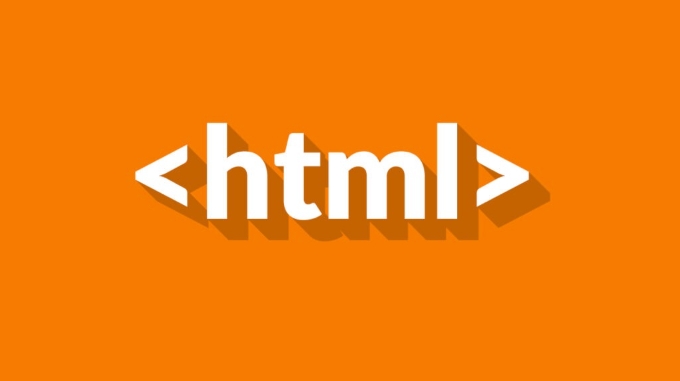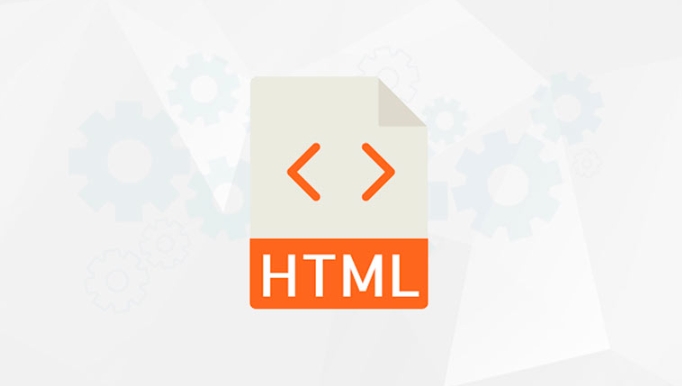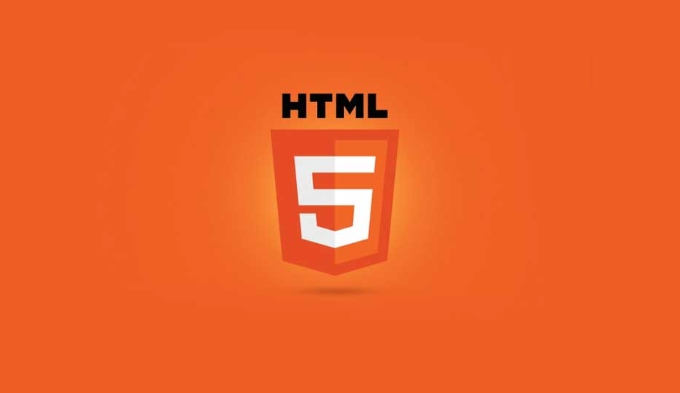Implementing client-side form validation using HTML attributes.
Jul 03, 2025 am 02:31 AMClient-side form validation can be done without JavaScript by using HTML attributes. 1) Use required to enforce mandatory fields. 2) Validate emails and URLs with type attributes like email or url, or use pattern with regex for custom formats. 3) Limit values using min, max, minlength, and maxlength. 4) Customize error messages with the Constraint Validation API, though these are limited and client-side only. Always validate data again on the server side for security and accuracy.

Client-side form validation is a key part of building user-friendly and secure web forms. The good news? You don’t always need JavaScript to do it. HTML has built-in attributes that let you validate basic user input right in the browser. Here’s how to use them effectively without overcomplicating things.

Use required for Mandatory Fields
The simplest and most common validation attribute is required. When added to an input field, it tells the browser that the user must fill it out before submitting the form.

For example:
<input type="text" name="username" required>
This works well for fields like names, emails, passwords — anything where leaving it blank would break the next step. Browsers will show a default message if someone tries to submit without filling it in.

Pro tip: Combine required with other attributes for stronger validation, like making sure an email looks like an actual email address.
Validate Email and URL Inputs with type and pattern
HTML5 introduced several input types like email, url, and number that automatically check if the format matches what's expected.
For instance:
<input type="email" name="email" required>
This ensures the user enters something that looks like an email (like user@example.com). Same goes for URLs. If you want even more control, like enforcing a specific format, use the pattern attribute with a regular expression.
Example:
<input type="text" name="zipcode" pattern="\d{5}" required>That line only accepts 5-digit ZIP codes. Keep in mind that while this is handy, regex can get tricky — test your patterns carefully.
Set Minimum and Maximum Values with min, max, and minlength / maxlength
Sometimes you need to limit how much or how little someone can enter. For numbers, dates, or text length, these attributes are your friends:
minandmaxwork on number and date inputsminlengthandmaxlengthset character limits on text-based inputs
Examples:
<input type="number" name="age" min="18" max="99"> <input type="text" name="username" minlength="3" maxlength="20">
These help prevent edge cases like absurdly long usernames or age values that don't make sense.
A few things to remember:
- These checks happen only on form submission.
- Users can still type invalid values, but the form won’t go through until they fix them.
Customize Error Messages (With Some Limitations)
By default, browsers show their own error messages when validation fails. But you can tweak those messages using JavaScript’s Constraint Validation API.
Here’s a quick way to change the message:
<input type="email" id="email" required>
<script>
const emailInput = document.getElementById('email');
emailInput.addEventListener('invalid', function(e) {
e.target.setCustomValidity('Please enter a valid email address.');
});
</script>Keep in mind that this doesn’t replace full validation — users can still bypass client-side checks entirely. So always double-check data on the server side too.
Basically, HTML form validation attributes give you a lot of power with minimal effort. They’re great for simple checks and improving the user experience without writing custom scripts. Just don’t rely on them alone for security or complex logic — that’s what backend validation is for.
The above is the detailed content of Implementing client-side form validation using HTML attributes.. For more information, please follow other related articles on the PHP Chinese website!

Hot AI Tools

Undress AI Tool
Undress images for free

Undresser.AI Undress
AI-powered app for creating realistic nude photos

AI Clothes Remover
Online AI tool for removing clothes from photos.

Clothoff.io
AI clothes remover

Video Face Swap
Swap faces in any video effortlessly with our completely free AI face swap tool!

Hot Article

Hot Tools

Notepad++7.3.1
Easy-to-use and free code editor

SublimeText3 Chinese version
Chinese version, very easy to use

Zend Studio 13.0.1
Powerful PHP integrated development environment

Dreamweaver CS6
Visual web development tools

SublimeText3 Mac version
God-level code editing software (SublimeText3)
 Shadow DOM Concepts and HTML Integration
Jul 24, 2025 am 01:39 AM
Shadow DOM Concepts and HTML Integration
Jul 24, 2025 am 01:39 AM
ShadowDOM is a technology used in web component technology to create isolated DOM subtrees. 1. It allows the mount of an independent DOM structure on ordinary HTML elements, with its own styles and behaviors, and does not affect the main document; 2. Created through JavaScript, such as using the attachShadow method and setting the mode to open; 3. When used in combination with HTML, it has three major features: clear structure, style isolation and content projection (slot); 4. Notes include complex debugging, style scope control, performance overhead and framework compatibility issues. In short, ShadowDOM provides native encapsulation capabilities for building reusable and non-polluting UI components.
 Essential HTML Tags for Beginners
Jul 27, 2025 am 03:45 AM
Essential HTML Tags for Beginners
Jul 27, 2025 am 03:45 AM
To get started with HTML quickly, you only need to master a few basic tags to build a web skeleton. 1. The page structure is essential, and, which is the root element, contains meta information, and is the content display area. 2. Use the title. The higher the level, the smaller the number. Use tags to segment the text to avoid skipping the level. 3. The link uses tags and matches the href attributes, and the image uses tags and contains src and alt attributes. 4. The list is divided into unordered lists and ordered lists. Each entry is represented and must be nested in the list. 5. Beginners don’t have to force memorize all tags. It is more efficient to write and check them while you are writing. Master the structure, text, links, pictures and lists to create basic web pages.
 Why is my image not showing up in HTML?
Jul 28, 2025 am 02:08 AM
Why is my image not showing up in HTML?
Jul 28, 2025 am 02:08 AM
Image not displayed is usually caused by a wrong file path, incorrect file name or extension, HTML syntax issues, or browser cache. 1. Make sure that the src path is consistent with the actual location of the file and use the correct relative path; 2. Check whether the file name case and extension match exactly, and verify whether the image can be loaded by directly entering the URL; 3. Check whether the img tag syntax is correct, ensure that there are no redundant characters and the alt attribute value is appropriate; 4. Try to force refresh the page, clear the cache, or use incognito mode to eliminate cache interference. Troubleshooting in this order can solve most HTML image display problems.
 HTML `style` Tag: Inline vs. Internal CSS
Jul 26, 2025 am 07:23 AM
HTML `style` Tag: Inline vs. Internal CSS
Jul 26, 2025 am 07:23 AM
The style placement method needs to be selected according to the scene. 1. Inline is suitable for temporary modification of single elements or dynamic JS control, such as the button color changes with operation; 2. Internal CSS is suitable for projects with few pages and simple structure, which is convenient for centralized management of styles, such as basic style settings of login pages; 3. Priority is given to reuse, maintenance and performance, and it is better to split external link CSS files for large projects.
 Can you put a tag inside another tag?
Jul 27, 2025 am 04:15 AM
Can you put a tag inside another tag?
Jul 27, 2025 am 04:15 AM
?Youcannotnesttagsinsideanothertagbecauseit’sinvalidHTML;browsersautomaticallyclosethefirstbeforeopeningthenext,resultinginseparateparagraphs.?Instead,useinlineelementslike,,orforstylingwithinaparagraph,orblockcontainerslikeortogroupmultipleparagraph
 HTML `link` for Prefetching DNS
Jul 23, 2025 am 02:19 AM
HTML `link` for Prefetching DNS
Jul 23, 2025 am 02:19 AM
Pre-resolving DNS can speed up page loading speed, and using HTML link tags for DNS pre-resolving is an effective method; DNSPrefetching saves subsequent request time by resolving domain names in advance; applicable scenarios include third-party fonts, advertising statistics scripts, resource hosting and CDN domain names; it is recommended to prioritize the main page dependency resources, reasonably control the number between 3 and 5, and use it with preconnect to better effect.
 What is the name attribute in an input tag for?
Jul 27, 2025 am 04:14 AM
What is the name attribute in an input tag for?
Jul 27, 2025 am 04:14 AM
Thenameattributeinaninputtagisusedtoidentifytheinputwhentheformissubmitted;itservesasthekeyinthekey-valuepairsenttotheserver,wheretheuser'sinputisthevalue.1.Whenaformissubmitted,thenameattributebecomesthekeyandtheinputvaluebecomesthevalueinthedatasen
 How to create an unordered list in HTML?
Jul 30, 2025 am 04:50 AM
How to create an unordered list in HTML?
Jul 30, 2025 am 04:50 AM
To create an HTML unordered list, you need to use a tag to define a list container. Each list item is wrapped with a tag, and the browser will automatically add bullets; 1. Create a list with a tag; 2. Each list item is defined with a tag; 3. The browser automatically generates default dot symbols; 4. Sublists can be implemented through nesting; 5. Use the list-style-type attribute of CSS to modify the symbol style, such as disc, circle, square, or none; use these tags correctly to generate a standard unordered list.






